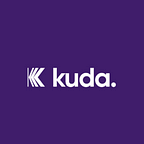5 Ways To Manage Your Business Cash Flow
Keeping an eye on little details, like money coming in and going out, can keep your cash flow healthy.
It‘s not uncommon to occasionally experience an irregular cash flow — maybe due to seasonality, economic fluctuations, or market dynamics. Whatever the reason may be, the biggest problem, however, is when you start to have more expenses than income or insufficient funds to cover your expenses. To make sure your business is profitable over a long period it’s important to manage your cash inflows and outflows effectively. Here are a few ideas to get you started:
- Forecast Your Cash Flow
There’s no better way to have a good understanding of your financial situation than forecasting your cash flow. This helps you project your expected income and expenses. For example, if you run a seasonal business fashion shop, you’re likely to have more revenue during the festive seasons. You can plan accordingly with a cash flow forecast, which means allocating resources for additional inventory during peak periods or adjusting your expenses during the slower months.
To do this, you can use the Transactions Analytics feature on Kuda Business to get a report of your business cash flows. Make sure you account for all cash inflows, such as anticipated sales revenue, and receivables, and all cash outflows, such as salaries, rent, and inventory purchases.
2. Monitor Your Cash Flow Regularly
Making a cash flow forecast is helpful, but how often do you review your cash flow? You can pick a time that’s convenient for you weekly, monthly, or quarterly to regularly monitor your cash flow. When you compare your actual cash flow to your forecast, it is easy to spot potential issues early. And thankfully, it helps you identify areas where you can cut costs. For example, if you notice you’re spending a lot on marketing, you can evaluate which marketing channels are producing the most ROI. Or, if you notice new market conditions or cost changes, you can take proactive steps to improve cash inflow.
3. Stay on Top of Your Receivables
It’s easy to run into cash flow issues when you have too much revenue tied up in receivables instead of your bank account. So another way to manage cash flow is to stay on top of receivables. Be strict about your payment terms, make sure to let your customers know when payment is expected whether it’s within 7, 15, or 30 days, and send automated gentle reminders with the Invoicing feature on Kuda Business or even email prompts.
For particularly resource-heavy projects, ask for an initial deposit so that you have some cash to cover necessary expenses. Then, ask for the rest of the payment when you meet the deliverables. And if you have customers who often delay payments, consider charging a fee or interest. This approach ensures that they stick to the payment schedule, and make your cash flow more consistent.
4. Build an Emergency Cash Reserve
Set aside a percentage of your profit as a cash reserve to cover unexpected expenses or revenue fluctuations. A good rule of thumb is to have at least 3–6 months of expenses saved up. This will give you a cushion to fall back on during those tough times.
5. Cut Unnecessary Expenses
While bringing in more money is always a good way to manage your cash flow, cutting down on costs can achieve similar results differently. Look for areas where you can reduce costs, such as canceling subscriptions you no longer use, or renting and leasing equipment. Hire part-time workers to fill in your staffing gaps, especially during non-peak business seasons. Consider downsizing to a smaller office space. Negotiate with suppliers for better payment terms or discounts. These small adjustments can add up and improve your bottom line.
The more you keep an eye on your business cash inflows and outflows, the better you’ll be at managing it or adapting to new changes, while keeping your business profitable even when things get tough.
